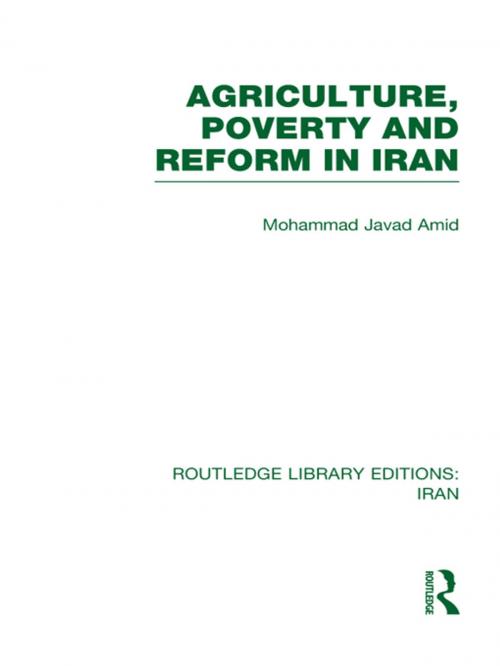Agriculture, Poverty and Reform in Iran (RLE Iran D)
Nonfiction, Social & Cultural Studies, Social Science| Author: | Mohammad Javad Amad | ISBN: | 9781136820823 |
| Publisher: | Taylor and Francis | Publication: | April 27, 2012 |
| Imprint: | Routledge | Language: | English |
| Author: | Mohammad Javad Amad |
| ISBN: | 9781136820823 |
| Publisher: | Taylor and Francis |
| Publication: | April 27, 2012 |
| Imprint: | Routledge |
| Language: | English |
As in many developing countries, the prospects for land reform in Iran seemed promising. It was expected to improve rural poverty and stimulate agricultural development by replacing the traditional landlord-peasant system with more peasant-biased, modern farming. This book assesses the economic consequences of land reform, focusing particularly on its effect on the living standards of the rural poor. Amid describes a ‘biomodal’ system of large and small farms that emerged after the reform. Large farms, with government support, modernized and grew more profitable cash crops, whereas small farms found difficulty in obtaining credit and continued to rely on traditional techniques and staple food crops. Land reform was not, the author argues a success for the majority of the Iranian rural population who experienced virtually no improvement in living standards and a growth of rural inequality as a result.
As in many developing countries, the prospects for land reform in Iran seemed promising. It was expected to improve rural poverty and stimulate agricultural development by replacing the traditional landlord-peasant system with more peasant-biased, modern farming. This book assesses the economic consequences of land reform, focusing particularly on its effect on the living standards of the rural poor. Amid describes a ‘biomodal’ system of large and small farms that emerged after the reform. Large farms, with government support, modernized and grew more profitable cash crops, whereas small farms found difficulty in obtaining credit and continued to rely on traditional techniques and staple food crops. Land reform was not, the author argues a success for the majority of the Iranian rural population who experienced virtually no improvement in living standards and a growth of rural inequality as a result.















